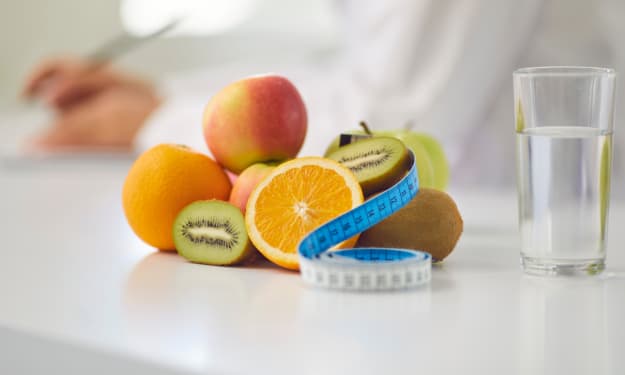How to Put Fiber in Your Diet
quick overview of putting fiber in your diet

Fiber isn’t just crucial for your gut – it’s essential to maintaining overall health and well-being.
The only problem?
According to the Academy of Nutrition and Dietetics, most Americans don’t consume nearly enough fiber.
If you’re looking to bolster your fiber intake, take a look at this quick overview of putting fiber in your diet and get on the road to better health!
What is fiber
You might know fiber as roughage or bulk.
It’s a general term that refers to plant-based carbohydrates your body can’t digest.
There are two types of fiber: soluble and insoluble. Soluble fiber dissolves into a gel-like material when it comes into contact with water.
Insoluble fiber doesn’t dissolve in water, so its contents don’t enter your bloodstream during digestion.
A diet rich in fiber has been linked to lowering cholesterol levels, controlling blood sugar and aiding weight loss.
Types of Fiber
There are two main types of fiber: soluble and insoluble.
Soluble fiber dissolves in water and can help lower blood cholesterol levels and reduce heart disease risks by slowing digestion, leading to a slow rise in blood sugar after eating.
It’s found primarily on beans, oats, apples, citrus fruits, carrots and barley.
Insoluble fiber doesn’t dissolve or absorb water; it moves more quickly through your digestive system (similarly to oatmeal).
Insoluble fiber helps ease constipation by bulking up stool and reducing defecation. The most common sources of insoluble fiber include wheat bran, whole grains, seeds and nuts.
How Much Fiber Do You Need
The number of different factors determines how much fiber you need.
The Institute of Medicine recommends 14 grams of fiber for every 1,000 calories consumed.
A 2,000-calorie diet should provide 42 grams of fiber each day.
To put that into perspective, here’s how you can get 42 grams of fiber in one day: * 3/4 cup cooked kidney beans
* 1 cup cooked lentils
* 1 cup whole grains (such as brown rice or barley)
* 3 cups fruits and vegetables That said, everyone’s body reacts differently, and everyone needs a little different amount.
If you have any questions about your specific situation, it’s best to consult with your doctor.
What Foods Contain Fiber
Protein is essential for building and maintaining muscle tissue.
To get enough protein into your diet, incorporate fiber-rich whole grains (whole wheat pasta, brown rice, quinoa) and beans/legumes (dried or canned chickpeas, lentils, black beans).
You can also add a small number of nuts/seeds as a snack or throw a handful into smoothies for an extra protein boost.
Fish can be another great option for incorporating more protein into your diet.
Eggs and lean meats such as chicken and turkey are other foods that can provide healthy amounts of protein.
Be careful not to overdo it, though!
Tips for Cooking with Fiber
Add fiber to your meals by including whole grains, fresh fruits and vegetables, nuts and seeds in each meal.
Whole-grain foods such as whole-wheat bread, rice, oatmeal and pasta are healthy sources of fiber.
To increase your daily fiber intake, add dried beans, peas and lentils (legumes) into your meals.
You can also get fiber from fresh vegetables such as artichokes and cauliflower; berries like blueberries and raspberries; along with prunes, plums and peaches.
If you want to lose weight safely but quickly, you might include a supplement containing psyllium husk for additional fiber intake per day.
Sources of Protein While Incorporating More Fibrous Foods
Protein is a necessary component of any diet.
Still, it can be challenging to include more protein into your everyday food choices if you don’t already eat meat or animal products.
However, you can take some simple steps to add more protein-rich foods into your daily intake while increasing your fibrous foods intake.
For example, eating an avocado has approximately 4 grams of protein per half fruit and contains dietary fiber and potassium. Additionally, a half-cup serving of cooked green peas has around 7 grams of protein and 12 grams of dietary fiber.
Incorporating these two foods into your diet will help increase your protein and fiber intake to only about 200 calories total.
About the Creator
Happy Life Official
I write about relationships, health, happiness, and much more to ease your life routine.






Comments
There are no comments for this story
Be the first to respond and start the conversation.